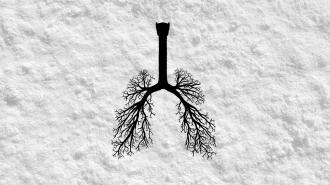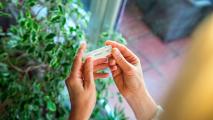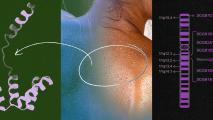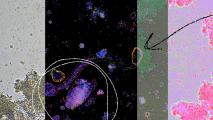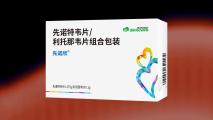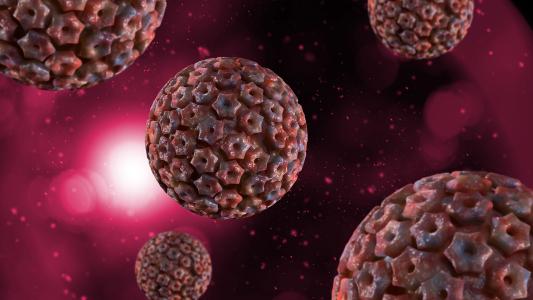A new inhalable powder that acts as an “invisible mask” for the lungs could potentially help end the COVID-19 pandemic — and maybe protect us from the flu, allergens, and air pollution, too.
The challenge: We’re about to enter our fourth year of the COVID-19 pandemic, and while the situation for many isn’t as dire as it was prior to widespread vaccination, about 1 million new cases are still being reported every week worldwide (a number that is surely an undercount).
Each of these infections is another opportunity for the coronavirus to mutate into a strain that is better at evading whatever immunity we may have from vaccines or infections, so, to really end the pandemic, we need to find ways to prevent infection.
Masking is one way to stop the spread of COVID-19, but even if people are willing, it isn’t practical in every situation — you can’t wear a mask while eating at a restaurant, for example, and might not want to during heavy exercise at a gym.
“Mucus is the body’s natural hydrogel barrier; we are just enhancing that barrier.”
Ke Cheng
An invisible mask: COVID-19, like nearly all respiratory infections, typically starts with the virus entering the mucus-covered cells that line the respiratory tract. That inspired North Carolina State University researchers to create an inhalable powder that protects those cells.
“The idea behind this work is simple – viruses have to penetrate the mucus in order to reach and infect the cells, so we’ve created an inhalable bioadhesive that combines with your own mucus to prevent viruses from getting to your lung cells,” said corresponding author Ke Cheng.
“Mucus is the body’s natural hydrogel barrier; we are just enhancing that barrier,” he continued.
How it works: The team calls the powder SHIELD (for “Spherical Hydrogel Inhalation for Enhanced Lung Defense”), and it’s made from tiny food-grade particles of gelatin and a polymer (called “PAAc-NHS ester”).
Once inhaled, moisture in the respiratory tract reacts with the particles, causing them to swell and adhere to the mucus, making it stickier. The effect is most potent within the first 8 hours of inhalation. SHIELD then naturally degrades, and within 48 hours, it is fully cleared from the body.
Proving it works: For their study, published in Nature Materials, the NC State researchers administered SHIELD to mice and then exposed them to two SARS-CoV-2 pseudoviruses (these viruses are useful for research because they can infect cells once, but can’t replicate).
For the first four hours after inhalation, SHIELD blocked 75% of the virus particles. After 24 hours, the rate was down to 18%. The protection was about the same when the researchers challenged the mice with flu and pneumonia viruses.
“It works like an ‘invisible mask’ for people in situations where masking is difficult.”
Ke Cheng
Next, SHIELD was administered to African green monkeys eight hours before they were exposed to the original coronavirus strain or the Delta variant. Samples were then collected from the animals’ lungs and nasal passages four times over the next week.
The researchers measured the viral loads in the monkey samples and found that they were 50 to 300 times lower than in samples from untreated control animals. (Non-human primates don’t display obvious signs of COVID-19 disease, so viral load is the standard way to measure infection.)
Additional tests suggested the treatment was safe and did not affect lung function.
Looking ahead: “SHIELD is easier and safer to use than other physical barriers or anti-virus chemicals,” said Cheng. “It works like an ‘invisible mask’ for people in situations where masking is difficult…. People can also use SHIELD on top of physical masking to have better protection.”
The researchers are seeking approval from the FDA to test SHIELD in people. They’re also exploring ways to make it even more effective, perhaps by adding antiviral therapeutics to the mix.
“[T]he beauty of SHIELD is that it isn’t necessarily limited to protecting against COVID-19 or flu,” said Cheng. “We’re looking at whether it could also be used to protect against things like allergens or even air pollution – anything that could potentially harm the lungs.”
We’d love to hear from you! If you have a comment about this article or if you have a tip for a future Freethink story, please email us at [email protected].
